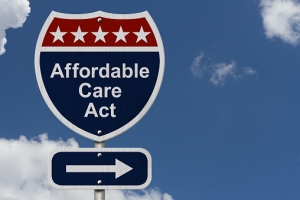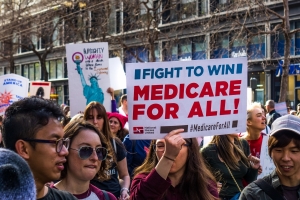Employers
Last year, the Department of Labor (DOL) issued new regulations pertaining to Association Health Plans (AHPs). The rules relaxed previously issued regulations by allowing AHPs to be established for employers who are in the same industry or geographic location. AHPs are regulated like large group health plans which are exempt from some of the Affordable Care Act (ACA) market reforms, including the requirement to cover essential health benefits.
There’s never a dull moment when it comes to the Affordable Care Act (ACA). Some people love the law, some people hate it, and others find themselves somewhere in between. However, there’s one thing that’s for certain. The rules are constantly being challenged or changed. Here are three key developments that occurred last week.
Simple Cafeteria Plans were created by the Affordable Care Act (ACA) and have been an option for eligible employers since 2011. This type of plan provides eligible employers with an automatic pass for many of the non-discrimination tests that apply to Cafeteria Plans and its component benefits. This is the primary difference between a Simple Cafeteria Plan and other more traditional Cafeteria Plans.
That flu shot you're providing to employees. Are you offering it as a benefit to COBRA beneficiaries? Because you should be.
While COBRA is conceptually easy to understand, it is tactically more challenging to administer. Many employers are unaware that certain benefits are subject to COBRA. On the other hand, some employers are offering COBRA in situations which they don't have to because of a misunderstanding of the law.
Health Savings Accounts (HSAs) have seen tremendous growth in the past decade and are quickly becoming one of the most popular employee benefits. These accounts allow individuals who are enrolled in a Qualified High Deductible Health Plan to use tax-free dollars to pay for out-of-pocket healthcare expenses for themselves and their families.
When talking about Health Flexible Spending Accounts (FSAs), you may hear the terms carryover, grace period and run-out period, but what do they mean and how do they differ? Here are some simple explanations of each term.
Over the years, HSAs have been touted as a way to pay for out-of-pocket medical expenses with tax-free dollars. However, recently HSAs have been making headlines as an alternative to 401(k) plans and other retirement plans.
The term “Medicare for All” has been making headlines recently. Democrats across the country have made this concept a central part of their platforms, and polls have shown that more than half of Americans are in favor of it.
But what does it really mean? Well, the best answer is that it means different things to different people.
Annual Medicare Part D reporting is required for all employers who provide health benefits with prescription drug coverage. The reporting is an online filing to the Centers for Medicare & Medicaid Services(CMS), and it lets CMS know if the prescription drug coverage available on the employer’s health plan is “creditable.”
A stand-out strategy for small businesses: Voluntary benefits enable small companies to do more with less
The competition for talent is fierce for small businesses. One in four say the talent pool for their open positions is poor, [1] and the Society for Human Resource Management lists retaining employees as one of the top three issues facing companies with 3-99 employees (along with employee productivity and controlling health insurance costs).[2]
Benefits Buzz
Enter Your Email









